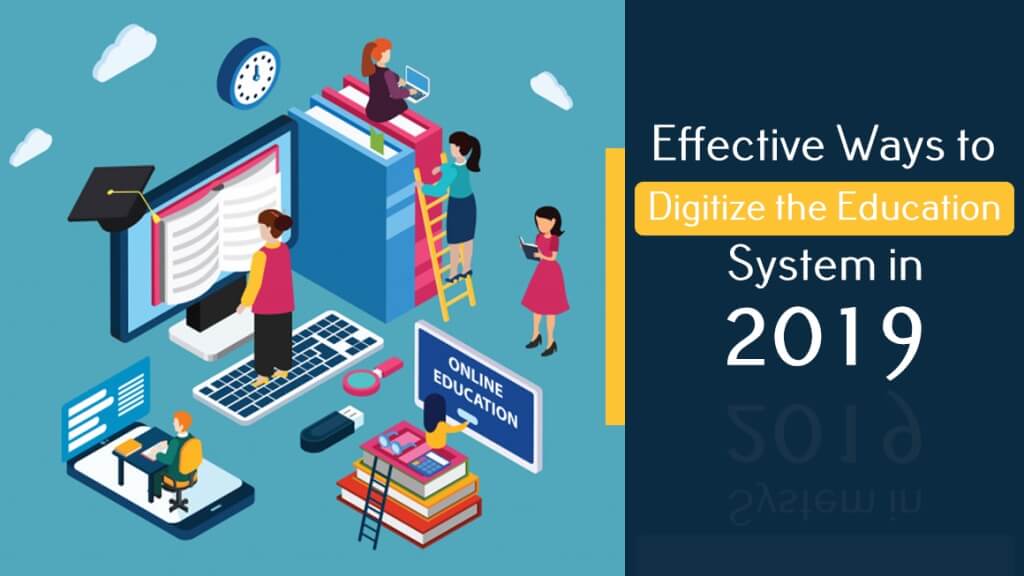
“Change is the only constant in life…”
Heraclitus, Ancient Greek philosopher
You don’t need to study philosophy to know that everything changes with time. Just take a look at the technological advancements in the last few decades, and you’ll see how things around you have changed. Whether the change is good or bad, that is a debate for another day. For now, we must acknowledge the fact that technology has played a huge role in reshaping the world.
Even though technology has made significant changes in various industries, the education industry hasn’t changed much in the last 200 years. Surely, many educational institutes are offering education, but the fundamental way of teaching remains the same. The approaches may be different, but for the most part, learning is still a guided process.
The question that we all should be asking right now is “Isn’t it time to upgrade learning for the digital age”?

Image Source: Pexels.com
In today’s digitized world, any knowledge loses its relevance within 2-3 years or even less. If a student learns something new today, the chances are that it will become ineffective before he finishes his education. Looking at this trend, it is quite evident that a significant change in the education system is long overdue.
How exactly can we upgrade learning for the digital age? Well, the educational institutes around the world can embrace some practical approaches.
1. Continuous learning for life:
With the way things are progressing, continuous learning is apparently the key to success. In order to stay relevant in today’s fast-paced world, we need to update our knowledge on a daily basis. However, it is easier said than done. While learning new things, you also need to unlearn the things you have learned previously.
For educational institutes, continuous learning can be a challenging thing to incorporate in the system. However, it is not impossible. With the advancement in areas such as artificial intelligence, Big Data analytics, cloud technology, and machine learning, more opportunities are being created every day. Learning institutes can integrate these technologies into their system to myobhelp students to keep their knowledge relevant through continuous learning and unlearning.
Before we can introduce continuous learning in the education system, we need to replace textbooks with digital content. For obvious reasons, it is easier to update information on the digital space than on printed textbooks. Also, it is more convenient for students to carry a tablet or laptop rather than carrying several textbooks in their bags.
2. Peer-to-peer learning:
As the digital content for learning becomes more available to students, it will be easier for them to collaborate with their peers beyond geographical limits. Thanks to seamless connectivity, it is now possible to get in touch with people across the globe. Students can use this to team up with other students from any part of the world and offer assignment help to each other.

Image Source: Pixabay.com
In the conventional learning model, classroom interaction is considered to be an effective way of learning. By bringing peer-to-peer learning into the digital space, we might just be able to facilitate better learning opportunities.
Interestingly, there are a number of online forums that help students to connect with each other and assist them in many ways. However, these forums are working independently. It may revolutionize the learning system if students enjoy similar platforms that are integrated with the education system.
3. Interactive learning:
The introduction of the internet has certainly made it easier for us to gain access to a humongous pool of information. It’s sad that we have not utilized its full potential in the learning sector. As the web-based applications and platforms become more available to us, we can introduce them to facilitate interactive learning.
Smart classes were introduced in the first place to facilitate better learning opportunities. While that initiative has seen success to some extent, it still has a long way to go. Currently, there are plenty of applications that can improve the engagement of students in studies.

Image Source: Pixabay.com
It is quite obvious that students are more interested in watching an interactive video about a historical event rather than listening to the lecturer talking about the same topic. A lot of private schools are already doing that. It is time that we make smart classes available to every student and help them interact, engage and learn at the same time.
4. Individual-specific learning:
It is true that the learning speed of every student isn’t the same. This is one of the reasons why there are disparities in the knowledge of the students who are attending the same curriculum. With the help of advanced technology, we can introduce an individual-specific approach in teaching and learning(instead of following the conventional methods).
With the individual-specific approach, students will be free to ask questions and clarify their doubts, which they might not do in a class full of peers. It will also help the teachers to curate the lessons as per the requirements of the students. It can play a major role in facilitating student-specific learning.
E-learning is not something new to the education sector. However, we are yet to witness the potential of this advanced learning approach. Since it is easier to share feedback on the e-learning platforms, teachers can see what students think about their approach towards teaching. Also, it is easier for teachers to assess the paper more accurately and have one-on-one sessions with the students.
To conclude,
We have the technology to turn these aforementioned concepts to reality. However, a majority of the countries do not have the infrastructure to implement the suggestions listed above. Unless organizations like the UN, IMF, or World Bank take the initiative to implement these ideas, it will be difficult to achieve an impressive global literacy rate.
Kefaya Hassan is a school teacher by profession, but she is also part time assignment writing at Myassignmenthelp.com Kefaya has a PhD in Sociology and loves to spend time with her pet.